- About Ramapo
- Academics
- Admissions & Aid
- Student Life
- Athletics
- Alumni
- Arts & Community
- Quick Links
- Apply
- Visit
- Give
The Effects of Hazing on Student Self-Esteem: Study of Hazing Practices in Greek Organizations in a State College
(PDF) (DOC) (JPG)March 6, 2014
Anne Mercuro, Samantha Merritt, Amanda Fiumefreddo [1]
College is a unique socialization experience. It’s the time when an individual is able to figure out who he or she is, as well as the type of friends he or she wants in his or her life. While Intramurals, clubs, athletics, and dorm-life are common ways of socializing, joining Greek-life –Fraternity or Sorority– is also popular among college students. Fraternities and sororities provide many benefits to students such as leadership opportunities, participation in college activities, friendships and extended connections with other chapters around the nation. Although popular, induction into Greek organizations has become a problem because of the practice of hazing. Hazing is defined as “…any activity, required implicitly or explicitly as a condition of initiation or continued membership in an organization, that may negatively impact the physical or psychological well-being of the individual or may cause damage to others, or to public or private property (Campo et. al., 2005, p. 137). According to Hoover and Milner (1998), “The attraction of hazing probably extends beyond the dictates of tradition, forging bonds through shared, secretive experiences. (The) rituals are thought to strengthen the group by proving the devotion of newcomers but also by helping to create a sense of loyalty” (p. 140). The effort to instill loyalty and devotion to the organization is pushed too hard sometimes. In essence, while fraternities and sororities offer a large social network for students and are beneficial to individuals’ growth, skills, and characteristics, hazing is a problem as it has negative consequences on an individual that simply strives to belong.
This paper studies hazing among Greek-organizations at a public liberal arts college in the Northeastern U.S. and its impact on individuals’ self-esteem. The paper proposes two hypotheses: first, individuals who experienced hazing will have lower self-esteem than those who have not experienced hazing; and second, fraternities haze more than sororities, based on personal observations in a small state college.
Perspectives on hazing
While membership in a Greek organization is typically seen in a positive light, some may wonder if the good outweighs the bad with respect to the potential risk of being hazed. Hazing is universally known as an initiation process that includes aggressive and harmful actions upon new members within Greek organizations, athletic teams and other types of clubs and activities. While hazing practices vary within organizations, there are some common hazing activities such as sleep deprivation, engaging in embarrassing behavior, drinking excessive amounts of alcohol, verbal and physical abuse, and much more (Cokley et al., 2001). These can impact a student negatively and hence it is important to be aware of potential negative implications.
Student attitudes about pledging
Social science research shows that hazing significantly influences people’s perspectives on Greek organizations, and has also affected new members both physically and cognitively. A number of researchers such as Cokley et al. studied the cognitive impact of hazing on students by surveying members and non members of organizations. For instance, Cokley et al. (2001) developed a Survey of Attitudes about Fraternities and Sororities (SAAP) to measure student perception about the role of pledging in Greek organizations. The survey focused on six factors that described attitudes towards Greek organizations: the purpose of pledging, the impact of pledging, conformity to pledging, rules, perceptions of Greek organizations, moral concerns, and beliefs about pledging difficulty.
The results of the survey showed that more females than males believed that pledging should be a positive experience. However, the results also showed that members of Greek organizations had a more positive view of Greek life and the pledging process in comparison to non-Greek students. The researchers concluded that “it is obvious that there are students who do value Greek letter organizations…likewise, it is apparent that when student’s perceptions of Greek letter organizations are uncritically positive, they become susceptible to hazing activities” (Cokley et al., 2001, par. 16). Hence, they argued that education about both the positive and negative aspects of Greek organizations should be given to all students, so that they can make a “fully informed decision about participation” (par. 16).
Similarly, Campo, Poulos, and Sipple (2005) studied how college students’ behaviors and beliefs correlated to hazing. They conducted a 20-minute web-based survey via e-mail using a random sample of 2,000 undergraduates. They used “specific questions on team-building and initiation activities (TBIs) and were derived from a national survey of college sports teams and university judicial board records” (p. 139). They found that drinking games and contests, as well as sleep deprivation, were the most commonly reported forms of hazing. Their results showed that students thought that hazing was in fact harmful, but they were neutral to their susceptibility to harm (p. 146). Campo et al.’s study concluded that “hazing is occurring on campus, although not always recognized as such by students” (p. 137).
Further, it has been observed that attitudes about hazing practices, especially alcohol overdose, may vary between fraternities and sororities. Drout and Corsono (2003) conducted an experimental study of student perceptions on alcohol overdose by placing them in hazing scenarios in a fraternity and sorority setting. The scenarios involved fraternities giving the students controlled and uncontrolled overdoses of alcohol consumption. Out of the 231 students, the 78 fraternity members within the study tended to view their fraternity president’s authority as not responsible for the outcome of involuntary alcohol consumption and viewed their brothers the same way. However, the 34 sorority members of the sample population took the scenarios more seriously. They felt more responsible for the overdose of alcohol consumption when the president was not involved. The researchers found that there were differences (not noted in the study) in beliefs on why overdoses occur among Greek and non-Greek individuals. Sororities and non-Greeks believe that it occurs because of a person’s need to be accepted into Greek-life, whereas fraternities believe that it occurs from a pledge’s over-willingness to please brothers. Overall, the researchers found that fraternities were more willing and accepting of alcohol overdose amongst the students than sororities or non-Greek students.
Another reason for hazing in organizations is group solidarity. Cimino (2011) studied hazing by surveying participants in strongly cooperative groups and weakly cooperative groups. He asked participants to picture themselves in high effort and low effort group activity and see if they were high or low contributors. The results were that participants desired more severe hazing in strong groups than in weak groups. In the second experiment he used the same model but improved the stimuli and removed threats to internal validity. In this experiment, participants were asked to focus on the benefits of “mutual group aid” (Cimino, 2011, p. 258). This group was found to desire more severe hazing in strong groups than in weak groups. Overall, these studies show that hazing is prevalent in Greek organizations and is practiced to maintain group solidarity. The practice can be harmful to its participants, though perceptions vary.
Impact of hazing on student self-esteem
Many cognitive processes could be negatively impacted due to hazing, such as self-esteem, moral and identity development. Though many students who decide to go through with the recruitment process perceive Greek organizations as beneficial, rarely do they consider the negative implications of hazing. Keating et al. (2005) state “striving to belong to a particular group, especially during ritualized initiations, may result in the justification of that effort, thereby inoculating individuals against any dissonant cognition they may harbor concerning the consequences of group membership” (p. 104). Especially when one is moving away from home for the first time, the idea of belonging and feeling accepted amongst one’s peers may triumph over any fears new pledges may initially face. While some may see the initiation process as harmful and overall negative, others may push aside this fear in order to actually raise their self-esteem and confidence amongst their peers. Through their study, however, Keating et al. (2005) found that both men and women who experienced “severe” induction activities were more likely to have an increased dependency on their fellow peers, feeling uncomfortable when left alone (p. 107).
Further, affiliation in Greek societies has no positive effects on individual identity. Kilgannon and Erwin’s (1992) study on the difference between non-Greek men and women’s moral and identity development vs. Greek men and women’s development showed that non-Greek men and women had higher self confidence. For instance, this study proved that non-Greek women had higher moral reasoning averages than Greek women. Also, Greek men scored lower confidence levels of identity development than non-Greek men. Grossbard et al. (2009) examined gender as a moderator of the association between contingent self-esteem and body image concerns, including weight and muscularity. Results of the study found that females reported higher levels of contingent self-esteem and greater concerns about their weight, although males reported a greater drive for muscularity.
Membership in Greek society undermines students’ self-esteem and this has other negative implications. For instance, it was seen that these students were pressured to live up to certain standards set by others to feel good about themselves. Liuna and Tao (2013) argue that acceptance in groups affects students’ self-esteem. The researchers believed that in the domain of academic competence and competition, contingencies of self-worth moderated the relationship between self-esteem and self-competence, and in the domains of appearance, family, virtue, and others’ approval, contingencies of self-worth moderated the relationship between self-esteem and self-liking. They defined contingencies of self-worth as “domains in which a person has based his or her self-esteem, such that perceived successes or failures in those domains greatly determine the person’s self-esteem state” (Liuna & Tao, 2013, p. 97). They concluded that individual importance is not the only means by which people satisfy their self-esteem needs.
The level of self-esteem impacted student misuse of alcohol, prejudices etc. Zeiger-Hill, Stubbs, and Madson (2013) claim that individuals who possess high levels of self-esteem consume less alcohol and experience fewer negative consequences than those with fragile self-esteem who relied on living up to certain standards in order to feel good about themselves. Crocker et al. (1987) stated that individuals who have lower self-esteem tend to be more prejudiced, for example in terms of failure feedback and derogation of members of out-groups. As a result, they concluded that individuals who had higher self-esteem would respond to threats to the self-concept by detracting from out-groups when group boundaries have evaluative implications.
These studies suggest that hazing affects student self-esteem and there are considerable differences between members of Greek societies. Based on the prior studies, we conducted research in a public liberal arts college to see who is most susceptible to hazing on campus and how hazing affects their self-esteem.
Method
This study was conducted in order to investigate if members of fraternities are more likely to experience hazing than members of sororities and assess whether hazing has an effect on students’ self-esteem levels. The participants in this research completed an electronic survey. The survey was designed to assess students’ self-esteem levels and their perceptions of hazing.
Participants in the sample were undergraduate students from a public liberal arts college in the Northern U.S. The survey was constructed using Qualtrics Research Suite, an online survey software that allows students to collect and analyze the data they receive. The survey link was distributed through college e-mail and on a social media website group page. Seventy-eight surveys were collected and recorded.
The researchers used a non-probability sampling technique called convenience sampling because of accessibility and time factors. Convenience sampling allows for a quick and inexpensive recruitment of respondents, allowing the researchers to collect as much data as necessary for the study in a short amount of time. Due to this limitation, the respondents may not represent all subgroups within the college’s student population.
Measures
At the beginning of the survey, participants were given an informed consent form. Participants were made aware that the primary aim of the project was to explore predictors of self-esteem. Given the sensitive nature of this subject, it is important for participants to know that their responses remain anonymous. Before beginning the survey, they were informed that their participation in this research project was voluntary, that they were allowed to withdraw at any time. The informed consent form also provided a quick overview of what the survey questions entailed. Participants were asked to complete several demographic questions and were then asked to complete the Rosenberg Self-Esteem Scale [RSES], in which they indicated their agreement or disagreement with each item (Sociology Department of University of Maryland, n.d). The paragraph also informed the participants that while there was no risk associated with their participation, if they had any questions or wished to receive the findings of the study, they would be able to contact the researchers. After submitting their responses, participants were then provided with a debriefing statement that informed them of the purpose of the study. Caution was also exercised with regards to ensuring that participants did not feel hurt or embarrassed, such cases were referred to the college’s counseling center.
After electronically signing the informed consent form, we asked demographic questions that assessed the participants’ gender, race, residential status, and involvement with Greek organizations. Following the demographic questions, RSES was implemented to evaluate students’ self-esteem. Participants were asked to rate their agreement with each question, varying from strongly agree to strongly disagree, without a neutral category. Regarding self-esteem, statements such as “I take a positive attitude toward myself” and “I feel that I am a person of worth, at least on equal plane with others” (isn’t this “an equal plane”) were included (Sociology Department of University of Maryland, n.d.). After the participants completed the RSES, they were presented with a scale that assessed their perceptions on harassment in general, with a few questions addressing hazing in particular. An example of a statement that addressed hazing was, “Even though hazing is a form of harassment, unless there is physical abuse, I would not consider it hazing” (Appendix A). For the final question of the survey, participants were given a list of different forms of harassment/abuse and were asked to check off the ones that they had experienced, with hazing being one of the choices.
Demographic profile
The research examined four characteristics: sex, race, residential status, and Greek affiliation. The sample consisted of 15 males (19%) and 63 females (81%) (Table 1). In regards to race, the sample consisted of 63 Caucasian participants (81%), 6 Latino or Hispanic participants (8%), 6 Asian or Pacific Islander participants (8%), 1 African American participant (1%), and 2 that classified themselves as “other” (3%) (Table 1). 53 participants live on campus (68%), and 25 participants are commuters (32%) (Table 1). As for Greek affiliation, 33 respondents are part of the college’s Greek Life, with 6 respondents belonging to a fraternity (8%) and 27 respondents belonging to a sorority (27%) (Table 2). 45 participants stated that they were not involved in any of the Greek organizations on campus (58%) (Table 2).
Results
The objective was to examine if members of fraternities are more likely to experience hazing when compared to members of sororities. Also of interest was whether hazing has an effect on students’ self-esteem levels. The researchers expected that the data would reveal that fraternities were more likely to haze their members than sororities, and that those affiliated with Greek organizations would have lower self-esteem due to hazing. The participants responded to statements that assessed self-esteem and experiences with multiple forms of harassment, including hazing.
Respondents were presented with the RSES to assess their self-esteem (Appendix A). The ten questions consisted of five positive and five negative expressions of self-esteem. Respondents were asked to rate their responses from 1 to 4, with 1 being strongly agree and 4 being strongly disagree. For this research, the researchers decided to recode the positive expressions so that responses would be 1 to 4, but 1 would be strongly disagree and 4 would be strongly agree. Overall, the 33 participants that were affiliated with Greek organizations had a higher self-esteem (33.42), and the 45 participants who weren’t had lower self-esteem (31.55) (Table 5). However, those who belonged to fraternities had a self-esteem average of 30.83, which was the lowest average compared to those who belonged in sororities (34.0) and those who were not affiliated with Greek organizations (31.56) (Table 6).
In addition, respondents were also presented with a checklist where they were given eight possible forms of abuse and were asked to select all that applied to their personal experiences. The eight possible choices that the participants could have selected were hazing, physical abuse, verbal abuse, involuntary behavior, forced alcohol consumption, humiliation, intimidation, and/or feeling degraded (Appendix A). 65 of the respondents stated that they had not experienced hazing while 13 of the respondents stated that they had. Those who stated that they had not experienced hazing had a self-esteem average of 32.876, while those who said that they had experienced hazing had a self-esteem average of 29.692, signifying that those who had said that they had experienced hazing had a lower self-esteem. The data revealed a significant relationship among the variables (p = .039, p < .05) (Table 4).
Next, the researchers decided to do a cross tabulation between Greek Affiliation and the checklist that signified their experiences with various forms of abuse. When asked if they had experienced hazing, 83.3% of the participants selected that they had not experienced hazing, which included 83% of those who belonged to a fraternity, 63% of those who belonged to a sorority, and 65.6% of those who were not affiliated at all. Only 1 fraternity member (16.7%), 10 sorority members (37.0%), and 2 non-Greek members (4.4%) selected that they had experienced hazing, making up 16.7% of the participants (Table 7). When asked if the participants had experienced physical abuse, 85.5% of the sample stated that they had not, with 100% of fraternity respondents, 92.6% of sorority respondents, and 84.4% of non-Greek affiliated respondents all falling under this statistic. Only 11.5% of the sample stated that they had experienced physical abuse, with 7.4% of those respondents belonging to a sorority, and 15.6% respondents not belonging to a Greek organization (Table 9). However, one possible limitation was the chance that these experiences had not happened within their Greek activities.
Moreover, the numbers of respondents that experienced verbal abuse were much higher than those who had experienced physical abuse. Among those who selected that they had experienced verbal abuse, the majority was not affiliated with Greek organizations (66.7%). Sorority members had the second highest percentage of the sample that had experienced verbal abuse (40.7%), and fraternity members had the lowest percentage that had experienced verbal abuse (16.7%) (Table 8). Over 96% (consistency) of the sample stated that they had never experienced forced alcohol consumption, with 100% of both sorority and fraternity members stating that they had not experienced forced alcohol consumption, and only 6.7% of those that did not affiliate with Greek organizations stating that they had (Table 10). Also, only 11.5% of the sample stated that they had experienced involuntary behavior, with 16.7% of fraternity members, 14.8% of sorority members, and 8.9% of non-Greek members making up this statistic (Table 11).
However, those who had experienced both humiliation and intimidation were much more prevalent, with 32.1% of the sample experiencing humiliation and 44.9% of the population experiencing intimidation. Fraternity members and sorority members reported feelings of humiliation equally, both equaling 33.3% of their respective populations (Table 12). Nevertheless, more sorority members admitted to feelings of intimidation (48.1%) over those who belonged to a fraternity that had experienced intimidation (16.7%) (Table 13). There were more non-Greek affiliated respondents who had not experienced both humiliation (68.9%) and intimidation (53.3%) over those who did experience humiliation (31.1%) and intimidation (46.7%) (Tables 12 and 13).
Respondents that were not involved in any Greek organization had the highest percentage among those who felt degraded (28.9%), as opposed to those who belonged to a fraternity (16.7%) and those who belonged to a sorority (25.9%). Fraternity members had the highest amount of respondents that stated that they did not feel degraded by others (83.3%), compared to those that belonged in a sorority (74.1%) and those that were not Greek affiliates (71.1%) (Table 14).
The results show that the overall self-esteem of those who belong to Greek organizations was higher on average (33.42) than those who were not affiliated (31.55) (Table 5). However, fraternity members had the lowest overall self-esteem score (30.88), compared to sorority members’ overall self-esteem (34.0) and non-Greek affiliates self-esteem (31.556) (Table 6). The survey also showed that those who had not been hazed had a higher self-esteem with a self-esteem average of 32.876 and those who had been hazed had a self-esteem average of 29.692 (Table 4). Only one fraternity member, ten sorority members, and 2 non-Greek members admitted to being hazed (Table 7).
In studies that had more male participants, such as Drout and Corsono’s (2003) research, many researchers find that fraternities are more accepting of alcohol overdose amongst the students than sororities or non-Greek students. This is due to fraternities’ beliefs that indulgence in alcohol will eventually lead to acceptance and approval from their Greek brothers. Due to the present study’s lack of male participants, the current results found that only 6.7% of the respondents admitted to being pressured into drinking alcohol, none of whom belonged to a Greek organization. These findings also differ from Glindemann et al.’s (1999) study. Glindemann et al. (1999) found that there was a distinct correlation between college students’ levels of self-esteem and their consumption of alcohol; this has relied on self-reported measures of alcohol use.
The current study’s results also differ from Keating et al.’s (2005) research. Keating et al. (2005) found that both men and women who experienced severe induction activities were more likely to have an increased dependency on their fellow peers, feeling uncomfortable being left alone. The present research results found that fraternity members had the lowest overall self-esteem score and that if one had not been hazed then he or she typically had a higher self-esteem average. These findings correlate with the researchers’ original hypothesis that fraternities are more likely to haze than sororities and that hazing would have a negative impact on self-esteem. However, the findings did not reveal that hazing was the leading cause of low levels of self-esteem, with only 16.7% of the sample admitting to experiencing hazing.
While fraternities seemed to be having the lowest levels of self-esteem, the findings show that Greek members collectively had higher levels of self-esteem. As Keating et al. (2005) stated “striving to belong to a particular group, especially during ritualized initiations, may result in the justification of that effort, thereby inoculating individuals against any dissonant cognition they may harbor concerning the consequences of group membership” (p. 104). Especially when one is moving away from home for the first time, the idea of belonging and feeling accepted amongst one’s peers may triumph over any fears new pledges may initially face. So while some may see the initiation process as harmful and negative, others may be pushing aside this fear in order to actually raise their self-esteem and confidence amongst their peers.
Similar to the current study, Campo, Poulos, and Sipple (2005) conducted a web-based survey using a random selection of 2000 undergraduates. Their goal was to see college students’ attitudes, behaviors, and beliefs on hazing. Their survey results showed that students thought that hazing was in fact harmful, but they were impartial to their vulnerability to harm. They concluded, “hazing is occurring on campus, although not always recognized as such by students” (Campo et. al, 2005, p. 137).
Social science research on hazing is limited to a few campuses. It will be interesting to broaden this by surveying students across North America and see how results differ from college to university as well as state to state. While it is apparent that hazing is an issue within every college, assessing more schools in various states would help determine if hazing is prevalent among specific universities and/or states. Future research on the prevalence of hazing among Greek organizations and its influence on self-esteem should further inquire about hazing processes and aim to collect more specific information about the participants’ experiences during the hazing processes.
Table 1: Demographic profile of sample

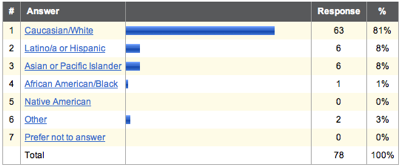

Table 2: Greek organization membership


Table 3: Self-esteem scale results
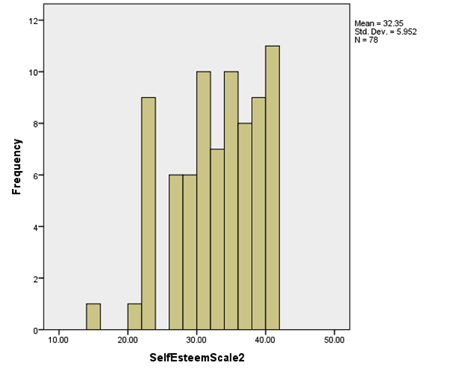
Table 4: Hazing effects on self-esteem
Group Statistics:

Independent Samples Test:
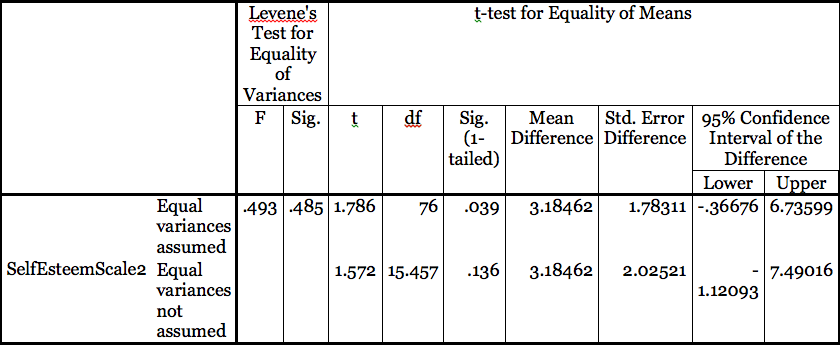
Table 5: Self-esteem effects on Greek affiliation
Group Statistics:

Independent Samples Test:
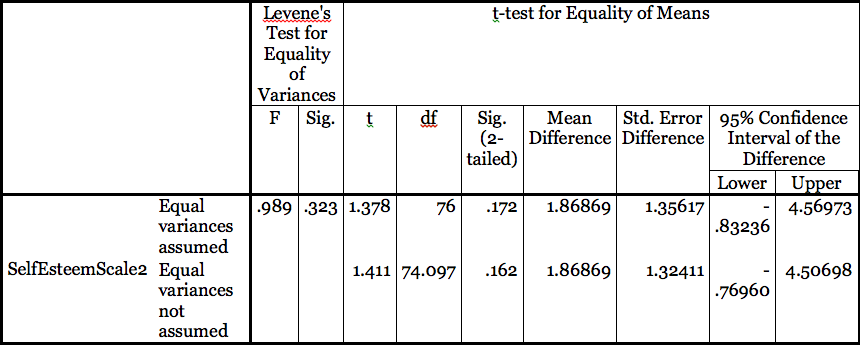
Table 6: Self-esteem effects on fraternity, sorority, and non-Greek members
Descriptives:
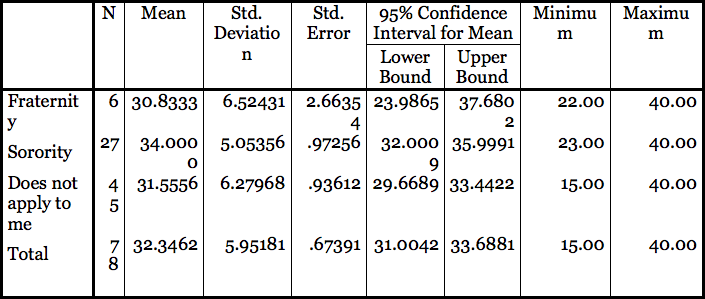
Table 7: Cross-tabulation between self-esteem and hazing
Have you ever experienced any of the following (Check all that apply):

Table 8: Cross-tabulation between self-esteem and verbal abuse:

Table 9: Cross-tabulation between self-esteem and physical abuse:

Table 10: Cross-tabulation between self-esteem and forced alcohol consumption:
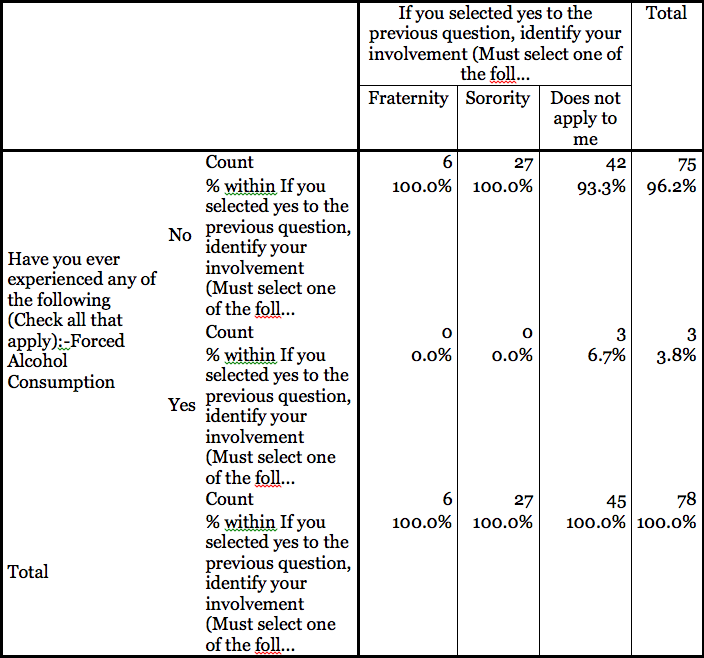
Table 11: Cross-tabulation between self-esteem and involuntary behavior:
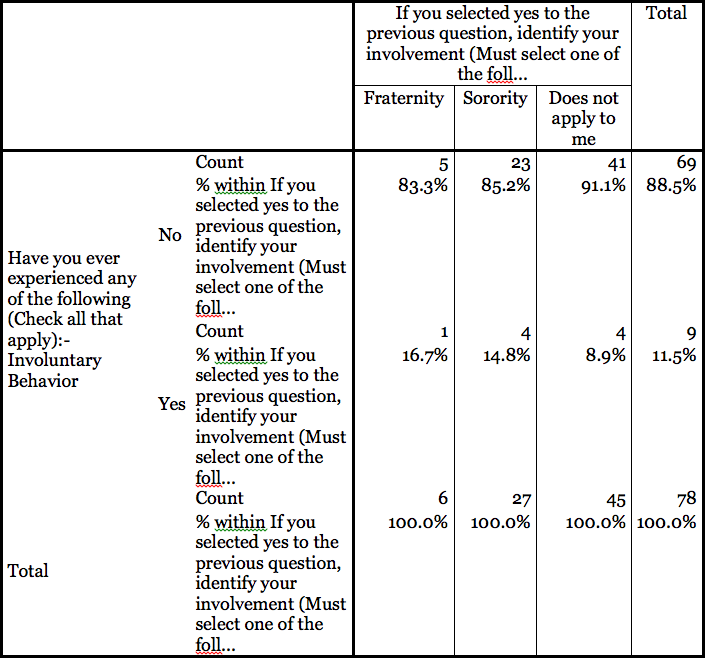
Table 12: Cross-tabulation between self-esteem and humiliation because of others:
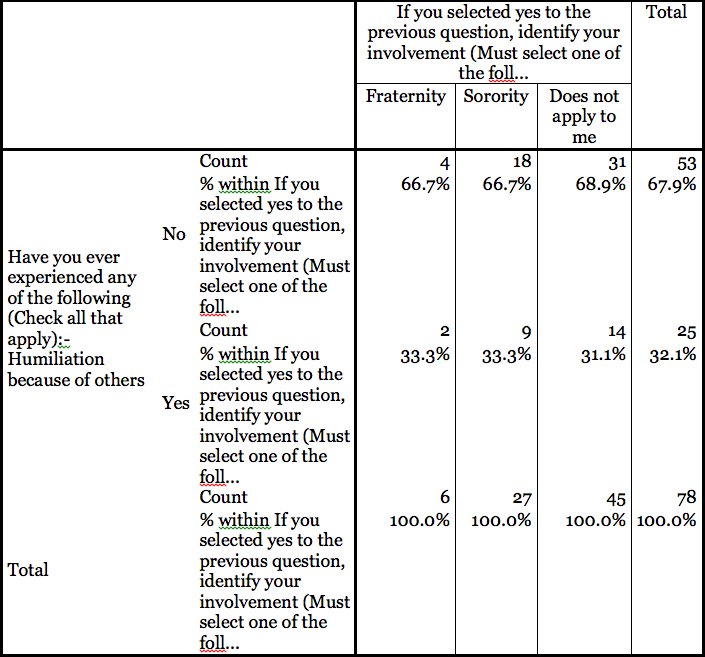
Table 13: Cross-tabulation between self-esteem and intimidation because of others:
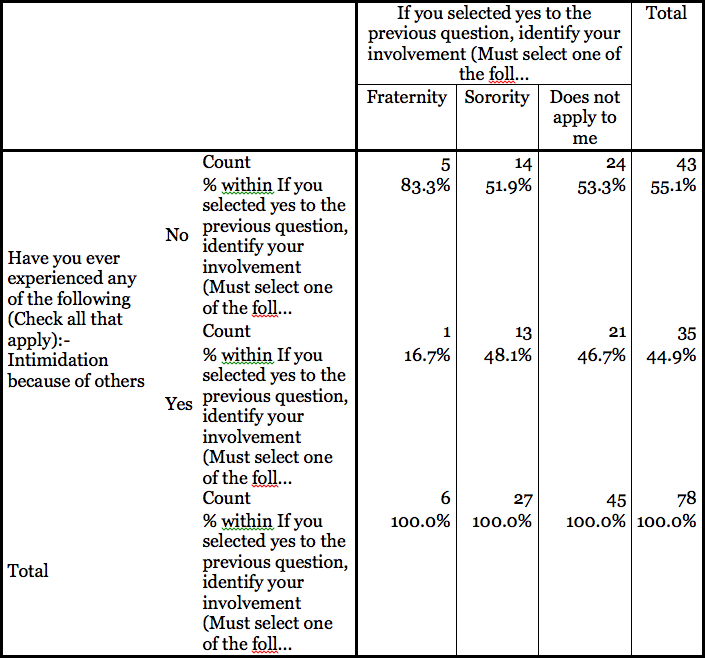
Table 14: Cross-tabulation between self-esteem and degraded by others:
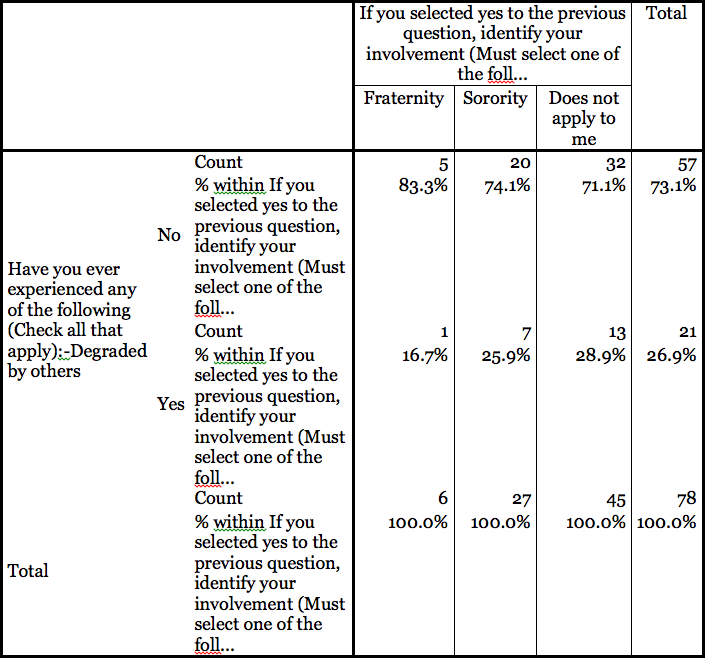
References
Brand, Jeffery A., & Dodd, David K. (1998). Self-esteem among college men as a function of greek affiliation and year in college. Journal of College Student Development, 39(6), 611-611.
Campo, S., Poulos, G., & Sipple, J. W. (2005). Prevalence and profiling: Hazing among college students and points of intervention. American Journal of Health Behavior, 29(2), 137-49.
Cimino, A. (2011). The evolution of hazing: Motivational mechanisms and the abuse of newcomers, Journal of Cognition & Culture; Vol. 11 Issue ¾, p-241-267.
Cokley, K., Miller, K., Cunningham, D., Motoike, J., King, A., & Awad, G. (2001). Developing an instrument to assess college students’ attitudes toward pledging and hazing in Greek letter organizations. College Student Journal, 35(3), 451-456.
Crocker, J., Thompson, L. L., McGraw, K. M., & Ingerman, C. (1987). Downward comparison, prejudice, and evaluations of others: Effects of self-esteem and threat. Journal Of Personality And Social Psychology, 52(5), 907-916. doi:10.1037/0022-3514.52.5.907
Drout, C. E., & Corsoro, C. L. (2003). Attitudes toward fraternity hazing among fraternity members, sorority members, and non-Greek students. Social Behavior And Personality, 31(6), 535-544.
Glindemann, K. E., Geller, E., & Fortney, J. N. (1999). Self-esteem and alcohol consumption: A study of college drinking behavior in a naturalistic setting. Journal Of Alcohol & Drug Education, 45(1), 60.
Grossbard, J. R., Lee, C. M., Neighbors, C., & Larimer, M. E. (2009). Body image concerns and contingent self-esteem in male and female college students. Sex Roles, 60(3-4), 198-207. doi:http://dx.doi.org/10.1007/s11199-008-9535-y
Hoover, J., & Milner, C. (1998). Are hazing and bullying related to love and belongingness? Reclaiming Children and Youth, 7(3), 138-138. Retrieved from http://search.proquest.com/docview/214196415?accountid=13420
Keating, C. F., Pomerantz, J., Pommer, S. D., Ritt, S. H., Miller, L. M., & McCormick, J. (2005). Going to college and unpacking hazing: A functional approach to decrypting initiation practices among undergraduates. Group Dynamics: Theory, Research, And Practice, 9(2), 104-126. doi:10.1037/1089-2699.9.2.104
Kilgannon, S. M., & Erwin, T. (1992). A longitudinal study about the identity and moral development of Greek students. Journal Of College Student Development, 33(3), 253-259.
Liuna, G., & Tao, J. (2013). Contingencies of self-worth moderate the effect of specific self-esteem on self-liking or self-competence. Social Behavior & Personality: An International Journal, 41(1), 95-107.
Saville, B. K., & Johnson, K. B. (2007). Year in college and sorority membership in predicting self-esteem of a sample of college women. Psychological Reports, 101(3), 907-912. doi:10.2466/PR0.101.7.907-912
Sociology Department of University of Maryland. (n.d.). The Rosenberg Self-Esteem Scale. Retrieved from http://www.bsos.umd.edu/socy/research/rosenberg.htm
Zeigler-Hill, V., Stubbs, W. J., & Madson, M. B. (2013). Fragile self-esteem and alcohol-related negative consequences among college student drinkers. Journal Of Social & Clinical Psychology, 32(5), 546-567. doi:10.1521/jscp.2013.32.5.546
[1] Anne Mercuro is a senior majoring in Psychology and minoring in Sociology. She will graduate in May 204 and intends to pursue a graduate degree in school counseling. Samantha Merritt graduated from Ramapo College of New Jersey. Amanda Fiumefreddo is a Psychology major with a double minor in Sociology and Substance Abuse. She is currently an honors student, the Treasurer of Psi Chi Honor Society, a member of the Psychology Coalition, and a member of the Golden Key International Honor Society. She is looking forward to graduating in May 2014 and working towards a career as a Certified Alcohol Counselor.
Thesis Archives
| 2020 | 2018 | 2017 | 2016 | 2014 |Copyright ©2025 Ramapo College Of New Jersey. Statements And Policies. Contact Webmaster.
